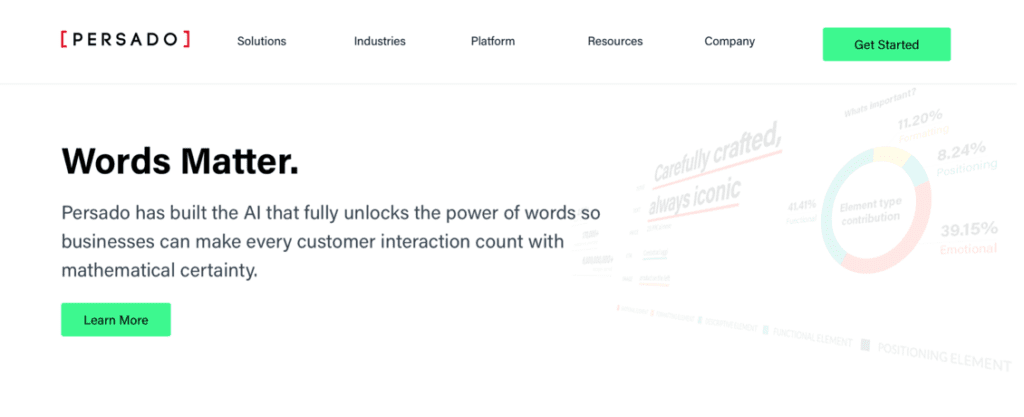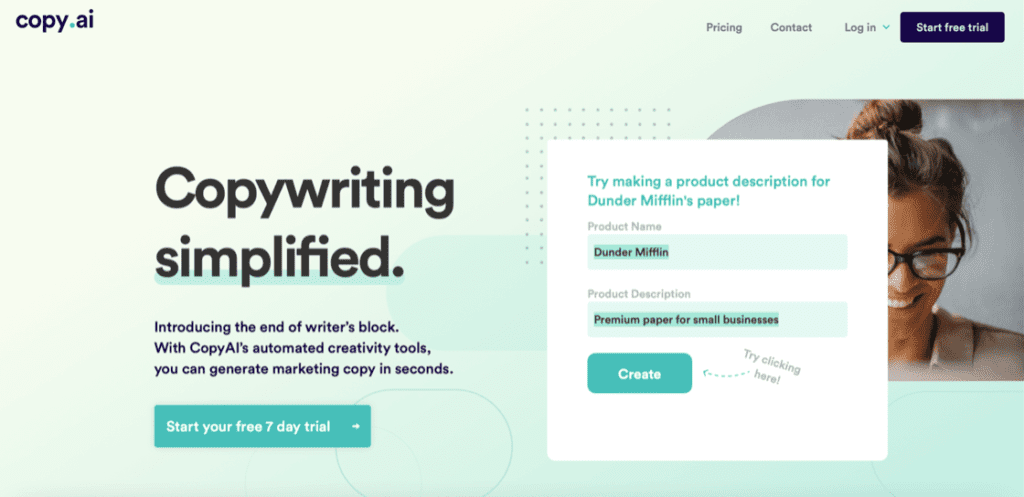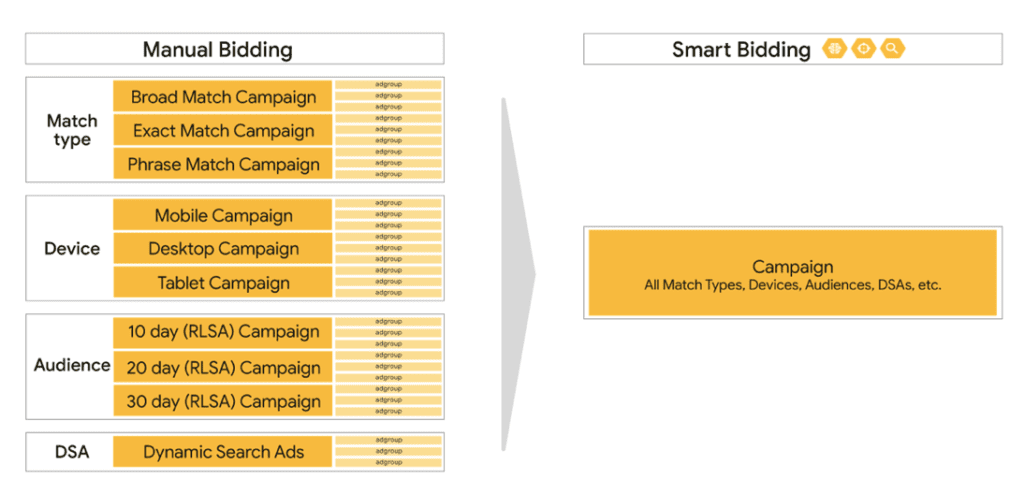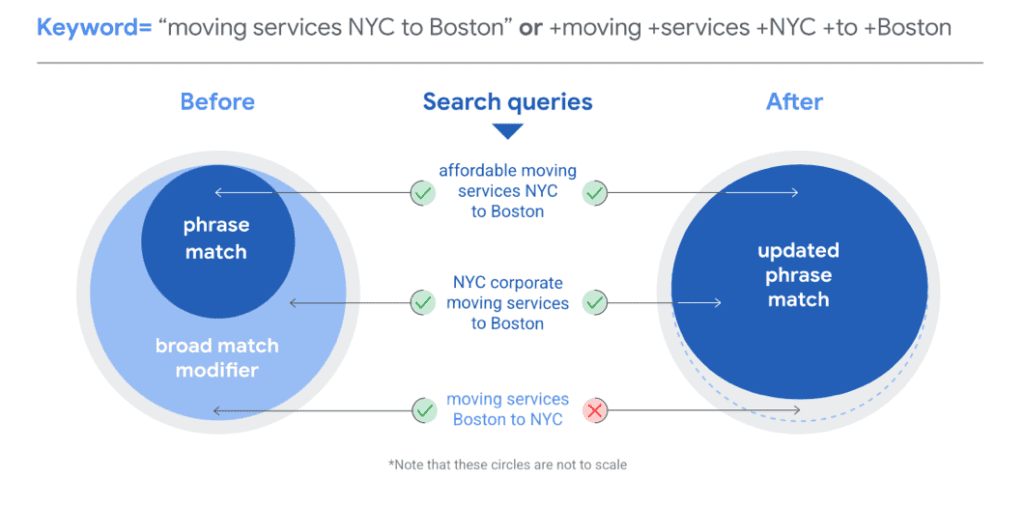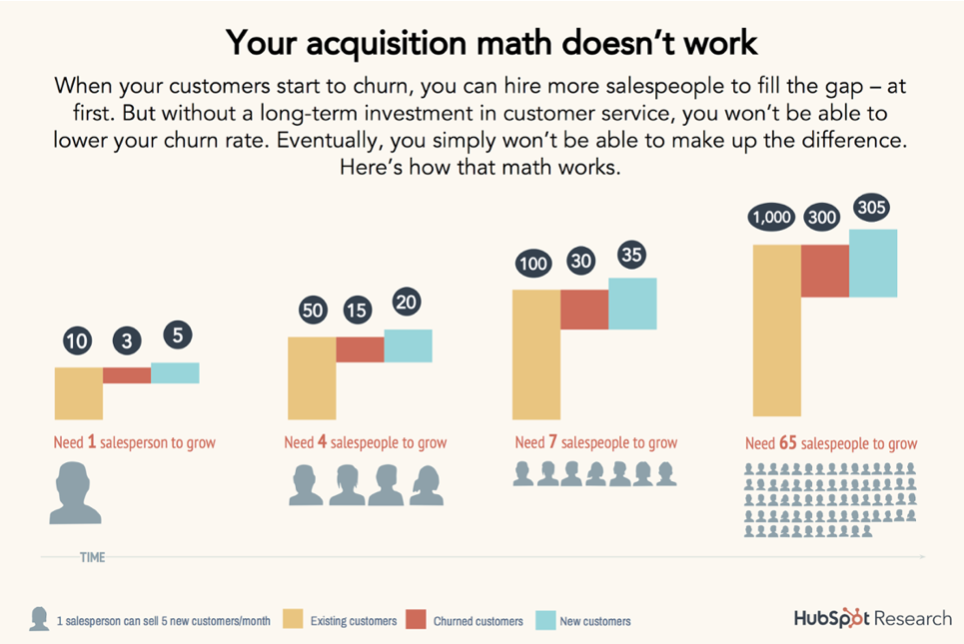How Smart Marketers Are Using AI To Boost Their Businesses
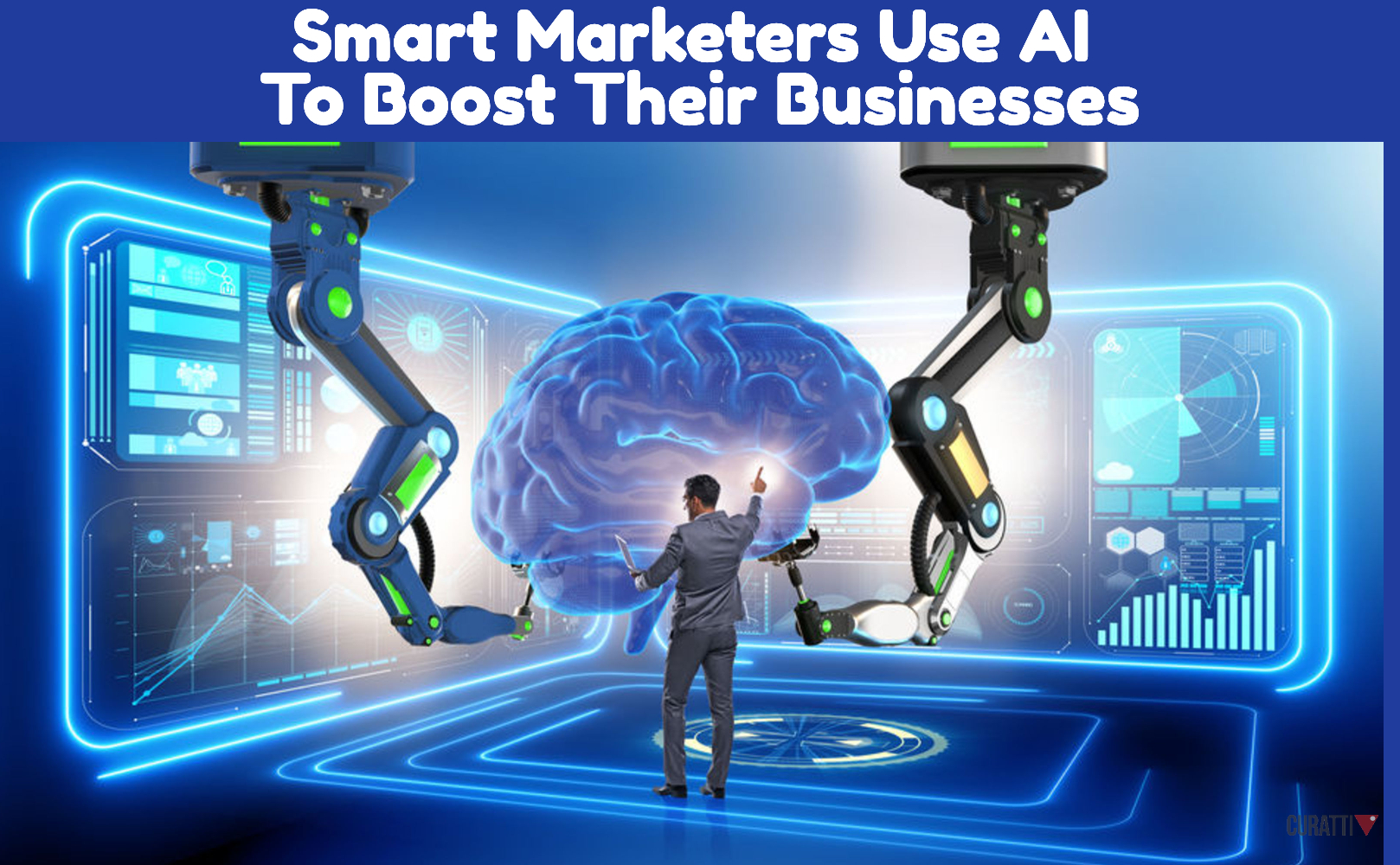
If you are reading this article, then you are probably already convinced that AI can have a significant impact on your business’s bottom line. It’s not a question of ‘Should I implement AI?’, but rather ‘How can I use AI to stay ahead of others?’
You are not alone in your quest. AI is one of the technologies companies like yours are using as a tool to gain a competitive advantage. According to Deloitte, 71% of businesses are planning to increase their investment in AI.
It’s no wonder, as AI is becoming more accessible for everyone. Just check out how many courses on AI are out there on the major online course platforms.
Also, AI is accessible for non-tech people. You do not need to have a big team of developers to build your custom AI solution in order to benefit from this technology. And you don’t have to be a developer to understand how AI works.
There are a handful of AI tools every marketer can start using now to see an improved conversion on a landing page or a better-performing ad. You just have to reach out for the right tools.
In this article, you will get some ideas on what problems AI can help solve and what AI-powered tools smart marketers are using to excel.
AI in Marketing: Is It Reserved for Big Brands?
AI has been a driver for many industries such as IoT, big data, robotics – to name just a few. However, we should not necessarily think of AI in terms of expensive projects, reserved for corporations only.
In multiple instances, AI is affecting all of us and is used by both big and small brands – it has become more democratic than it used to be.
Just think of smart chatbots designed to personalize offers, used by brands such as ASOS. They are an example of AI impacting customer journey and could be used by brands of many shapes. Those with bigger budgets can go for a custom chatbot solutions. Others, can use off-the-shelf tools and can achieve good results as well.
The use cases of AI can definitely inspire, but how are they applicable to your business? Are the benefits of AI reserved to big brands which have a lot of data and money at their disposal?
In this article, we want to show that AI is not reserved only for big brands and that companies with limited budgets can use it to achieve their marketing goals. You will learn about the ways on how smaller companies can benefit from AI as well, at a considerably low cost.
AI Marketing Achievement in a Nutshell
Let’s see what AI has already achieved and how you as a marketer can also benefit from this all-powerful technology.
AI and Copywriting
Marketers can apply AI to write a more human copy and, as a result, reach a higher conversion rate on landing pages or ads.
The case of Chase using Persado’s algorithms has proved that one line of text can impact conversion and sales in a way you would never imagine. We will examine this case later in this article, so keep reading!
AI and Social Media
Social media is another area where AI algorithms can improve performance. Marketers have been looking to automate social media presence for quite a while.
To achieve this, they have harnessed various social media management tools to get more work done faster. Now, these tools are offering much more than just scheduling and posting content at a specific time.
For example, SproutSocial is plugging artificial intelligence in to predict the best time for the post to go live.
AI and Pay-Per-Click Ads (PPC)
Google is relying on machine learning in Google Ads to help marketers automate the majority of time-consuming tasks on their ad accounts.
Instead of setting up bids manually, now, advertisers can get Google to set bids automatically with smart bidding.
As a result, ads are taking part in the auctions where conversion is more likely. Algorithms can achieve this result by assessing multiple signals such as device, location, search terms, the profile of a user making a search, and much more. We will talk about AI in pay-per-click ads later in this article.
AI Email Outreach
The businesses using mass email services for their lead acquisition strategies can also harness AI.
AI can predict the best time to send an email to a subscriber for a high open-rate. Also, it can help organize email content to achieve the results marketers expect.
For example, AI can write an email headline to achieve a higher open rate. When doing so, it takes into account previous historical data on user interaction with emails.
For example, Automizy, a free email subject tester, grades email subject lines based on over 1 million past email campaigns.
Such tools can analyze what subject lines performed the best in the past and which underperformed to find a perfect formula for a headline.
AI and Churn Reduction
Not only can AI help with a more effective lead acquisition on social media and Google ads, but it can also support marketers with retention.
Source: Automizy
With AI predictive models, marketers can get a better insight into what clients are at a higher
risk of churn and prepare a better plan for retention.
Every business can use AI to fight churn. However, subscription businesses such as telecom in particular are harnessing AI to save billions in regained contracts.
No wonder as these companies usually keep a huge amount of information. Rich data is indispensable for AI to make more precise recommendations. The more data you have, the better it is.
What’s next?
Now, as you have a taste for what AI can achieve for your business, let’s go a bit deeper into some of the use cases.
Writing Ad Copy With AI
Conversion-focused copywriting is much more than grammatically correct sentences. When writing ad copy, even the most seasoned writers can lose the key ingredient of the best performing copy – understanding and empathizing with the target persona.
To write a good ad copy, a copywriter needs to have an insight into the challenges, fears, and beliefs of the target audience.
Gaining the right insights usually means conducting dozens of interviews with customers and an additional experience of working with a similar target audience in the past.
However, having all this in your arsenal doesn’t guarantee winning with the copy written by AI. When given sufficient data to learn from, AI can provide marketers with ads that resonate better with consumers.
Chase Bank has once applied the AI algorithm to write an ad copy for their advertisement. They tested the two sentences:
- Access cash from the equity in your home
- It’s true—You can unlock cash from the equity in your home.
Which one do you think was written by AI?
As a matter of fact, the second version of a headline generated 450% higher conversion compared to the first headline. AI algorithms powered by Persado wrote a winning headline that sounded more human than the marketer’s copy.
AI-powered tools such as Persado won’t substitute copywriters, but they can give them a huge advantage when applied together with their experience.
That is the case where both complement each other.
Source: Persado
Better CTAs
A better headline is not the only thing that AI can help improve. Writing winning calls-to-action (CTA) is another of AI’s superpowers worth your attention.
Have you ever argued with your colleagues on what CTA performs better – an orange or a green one? If yes, you would probably dwell on what CTA text boosts the color’s performance as well – ‘Estimate my project’, ‘Sign up now’, or any other option you could think of.
So who is right? You can’t really tell if an orange button will perform better than a black one unless you make an experiment. It could be that its outcome will be different from the industry norm.
No matter what the outcome is, a more personalized CTA performs better than generic ones.
That’s where AI can do a better job to save time on setting up experiments.
AI can personalize CTA color, locations, and text at scale, and can produce the most effective CTA for each customer.
As you have already seen AI is doing way better work at serving headlines and CTA. This is time for one of the biggest challenges AI can help solve for marketers – writing copy from the ground up.
AI can help write copy that is well suited to your audience and give you countless ideas before you ever write the first line of the ad copy.
Tools such as Copy.AI can provide inspiring suggestions and insights for marketers and speed up the process of writing an article or a transactional email.
Source: Copy.AI
If you don’t want to do extensive research on a topic you are well familiar with, Copy.AI can give you a quick heads-up on what topics you should include in your outline.
Boost PPC Ads Performance
At the beginning of this article, I have mentioned the difference between manual and automated bidding in Google Adwords campaigns.
Let’s dive deeper into this one and see what you could achieve by harnessing AI-powered Google Ads for your business.
Machine learning is a part of smart bidding and helps marketers automate plenty of tasks. By letting Google decide on bids and assembling a better headline and ad description, we can finally focus on more strategic objectives.
New to Adwords? If you suddenly decide to give it a try after reading this article, starting out now would be much easier than a decade ago. Here is why.
With AI, marketers can set up campaigns much easier using a Hagakure approach.
This approach entails a simplified campaign structure powered by machine learning and it is much more effective than manual bidding.
With manual bidding, you had to create separate campaigns based on match type, device, audience, and more. You could imagine it was quite some work to do!
What Is The Hagakure Approach
Now, you do not have to bother – with AI you will spend less time on setting up and managing campaigns. Also, you can achieve better results.
For example, a Ukrainian language learning app, Preply, has managed to increase searches by 400%, conversions – by 80%, and decreased cost per conversion by 40% thanks to the Hagakure approach. Here is a visual description of how this approach works.
Source: Think with Google
Google is not stopping here – there are many more changes involving AI on the horizon.
For example, Google is making it easier to manage keywords than it was before. By July 2021, Google is phasing off the broad match modifier keywords and leaving phrase match keywords. Phrase match keywords will take over broad match modifiers incorporating their behavior.
What does that really mean?
Before this planned change, marketers would have to think of the keyword combinations to add to their campaigns. Those would be necessary to reach users typing these terms in Google.
As you can imagine, it was a lot of work for a marketer to do. You just can’t predict all search terms for which you want your ads to display.
With AI, marketers don’t have to do that much work. Instead of spending hours searching for the right keywords, marketers can simply let AI do the heavy lifting.
If you are curious about the way it works, here is a more scientific way of describing the change in keyword types:
Source: Google Support
Reduce Churn
There are at least three vital tasks online businesses are dealing with every day – acquiring more customers, retaining, and regaining customers who are considered lost.
Getting a client to stay is often a more challenging task. You just can’t splash out your budget on paid ads to see a sudden increase in clients and recurring revenue. It doesn’t always work this way. Sometimes, a big chunk of newly acquired customers decide to leave the following month.
Source: Hubspot
Getting more customers who churn fast, usually means stretching out a sales department and the need to hire more sales agents. This trend limits the company’s growth and eats out margins.
For example, serving 1000 users with 300 churning every month means employing 65 salespeople to keep your business running.
Instead of hiring more salesmen and working on lower margins, reducing churn seems a better solution.
Churn is a complex issue as the steps to curbing it often require major product changes and improvements.
AI Predictive Models
There is one more thing that product marketers are fighting with when dealing with user churn. It is learning what customers are “at-risk” at a given moment and choosing the right way to communicate with them.
That’s where AI can give a helping hand. Thanks to AI predictive models companies have a tool to understand the behaviour of churning users better. Churning users usually have a similar profile and share the same behaviour that is preliminary to churn.
AI is able to identify these anomalies in user behaviour. For example, AI can show that the decreasing usage of some features or a technical issue will result in more customers leaving within the following month.
AI is using a lot of historical data to make these predictions – something a human being would not handle.
Also, AI can provide recommendations on what could help retain clients.
These insights help teams work out a more effective retention strategy and send more targeted emails to the users’ ‘at risk’.
For example, instead of contacting all users offering a hefty discount to boost retention, you can offer it only to those who have shown ‘red flags’.
How Much Does it Cost to Introduce AI?
To introduce AI as a custom solution, you would have to look for a machine learning developer. Hiring an AI unit is the way in which bigger companies approach AI adoption. They can sometimes outsource it to a software development company.
That makes a lot of sense for them to build a custom tool. It could be their unique know-how that competitors can access. Bigger companies have more chances to succeed with AI. They can dedicate a bigger budget to such projects. Also, access to data is another core reason that bigger companies benefit from AI more than smaller companies.
If you want to build your AI solution, you should have sufficient data. Small companies rarely store that much data to get AI to work. So what can you do to adopt AI if your company is not ready to build a custom tool?
In most cases, marketers would benefit from using the off-the-shelf AI solutions described in this article. Once you see the clear benefits AI is bringing – how it affects your conversion and revenue, you can make one more step forward and consider developing your custom AI tool. All this needs time and it is better to start somewhere small than not start at all.
Sign Up For Our Mailing List
If you’d like to receive more in-depth articles, videos, and Infographics in your inbox, please sign up below. We’ll also keep you abreast of our upcoming soup-to-nuts blogging class.

Sign up for the newest articles from Curatti, delivered straight to your inbox
Featured image: Copyright: ‘https://www.123rf.com/profile_Elnur‘ / 123RF Stock Photo
Margo Ovsiienko
Latest posts by Margo Ovsiienko (see all)
- How Smart Marketers Are Using AI To Boost Their Businesses - June 3, 2021


